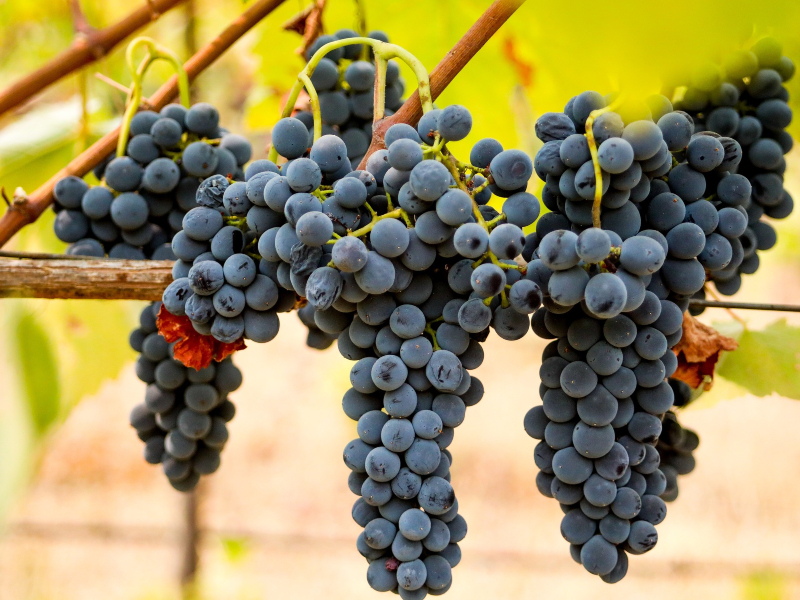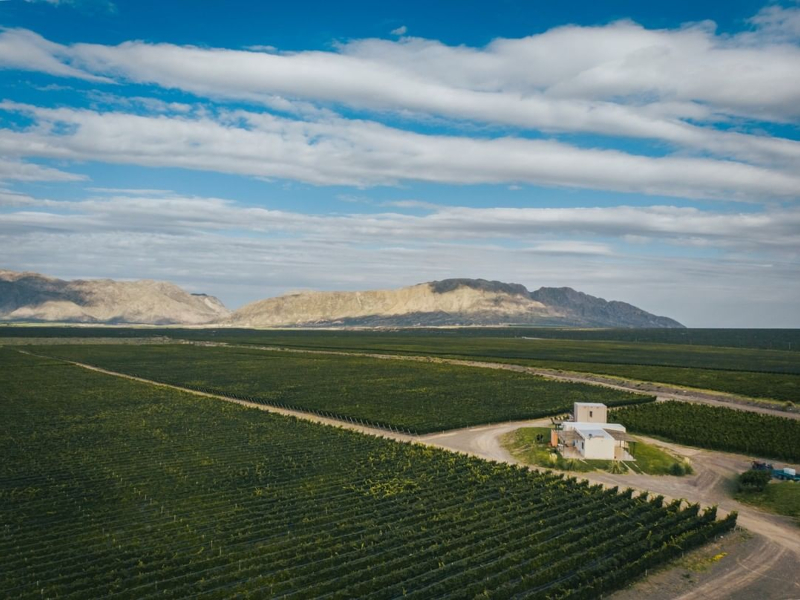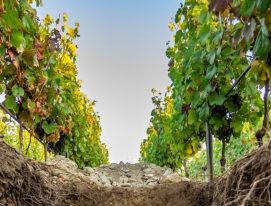July 27 is international Syrah Day. The variety, known in Argentina as Syrah, dates back to the ancient city of Shiraz in Persia (modern day Iran). Brought to France by the Romans, it found an ideal terroir in the Rhone Valley before spreading to Spain, Italy, Portugal, Australia, the USA and Argentina.
The variety was relaunched as Shiraz in Australia to emphasize its distinctive characteristics in the New World (the French celebrate Syrah day on February 16).
Sommelier José Iuliano, who has worked at restaurants such as Mirazur and Chila, explains the difference between the two styles: “There are two well-defined types of Syrah: first there’s the one found in the Rhone Valley, especially to the north, near Lyon, where the climate is cooler. There, the wines are elegant and balanced with three denominations: Cote-Rotie, Hermitage and Cornas. It’s generally made as a varietal, often with a dash of Viognier.
In southern Rhone, right down to the Mediterranean, one finds the blends known as GSM: Grenache, Syrah and Mourvedre. The other style is Australian, and includes some great wines. They tend to be more alcoholic with more exuberant characters in the nose and mouth; very different to those in Rhone. Argentine Syrah has always been more closely linked with the Australian kind due to the sunny terroirs but today some more European influenced versions are appearing and the results are getting fans of the variety very excited.”
Syrah Day in numbers

According to the National Viticultural Institute, Argentina has 11,108 hectares under vine accounting for 5.4% of the country’s vineyards, split as follows: 8085 in Mendoza, 2091 in San Juan and about 931 across the other provinces. Syrah has always had a loyal following but in recent years its popularity has been growing, especially in Argentina. Fans rhapsodize about its aromas of black pepper, flesh and smoky tones.
In Argentina, winemakers are looking to take advantage of the extra character that can be obtained at high altitude, especially in cooler areas, as the variety is versatile enough to thrive in different conditions.
Profiles of an iconic grape

Syrah Day is an excellent excuse to pick the brains of experts. German Buk, the oenologist at Finca Las Moras, makes some of the most interesting Syrahs in the country, using grapes from San Juan. He notes “its different aromatic profiles depending on the weather, which might include floral, fruity and black pepper aromas, or ones more reminiscent of dark fruit, smoke and toasted wood. In cooler areas, the tannins can be terse and prominent while where it’s warmer they get silky and very voluminous. The variety’s polyphenolic profile is capable of producing structured wines that age beautifully in the bottle.”
The range of climates and soils in Argentina produces plenty of very interesting Syrahs, agrees Juliana Rouek at Elefante Wines, “Pedernal is a cool area with plenty of sun and poor, rocky, calcium-rich soils. That’s a combination that can have spectacular, quite distinctive results; fresh wines with good aging potential and above all the Pedernal DNA, which will always include herbs such as oregano, thyme and jarilla in addition to the variety’s traditional spiciness.”
In Calingasta, in the valley of San Juan, at an altitude of 5250 feet, Andrés Biscaisaque at Finca Los Dragones is another producer excited by Syrah: “Here, it’s surprising us with its freshness, minerality and floral aromas when harvested early, producing raw wines with plenty of energy and varietal character. They say it can be a hard variety to sell but we’ve positioned ourselves well and we’re going to keep at it.”
The soul of the terroir

In the 1990s, Finca La Anita pioneered the production of high end Syrah in Mendoza and their oenologist Denis Vicino tells us about its character in Agrelo (Luján de Cuyo): “We get fruit that allows us to make a fleshy, robust red with a pleasant nose of fresh blackcurrant, blackberry, and spice sustained by vibrant, refreshing acidity. Its versatility makes it an excellent choice to drink on its own or with spicy meats, pasta, mushroom risotto and game. In Mendoza, you can make very elegant Syrahs, especially in cooler areas, maintaining the balance and concentration so that the variety can live up to its enormous potential.”
While this means that some are looking to produce fresh, taut Syrahs in the Uco Valley, in Maipú, a warm, classical winemaking region of Mendoza, several historic vineyards of the variety are being restored in Barrancas and Cruz de Piedra.
Guaranteed success
Mythic Cellars is a winery that has won many plaudits for their Mythic Block Syrah. Claudia Piedrahita, the winery director, says: “In Perdriel (Luján de Cuyo) we have an excellent quality parcel of Syrah and it seemed a good opportunity to make a crafted, high-end wine as a little act of rebellion against the mainstream in Argentina.”
Iuliano shares some of his favorite labels: “Like Malbec, Syrah is an excellent medium through which to express a terroir. In that regard, I think there are three wines that excel, running from north to south: Sikuri (Maimará, Jujuy), Mero Primo (La Consulta, Uco Valley) and Fin Del Mundo Single Vineyard (San Patricio del Chañar, Neuquén)”.
Further evidence of Shiraz’ potential in Argentina comes from Maipú in the form of Pascual Toso Alta Reserve Syrah, which performed very well in the French competition Syrah Du Monde, and another from a nearby vineyard, Benegas Estate Single Vineyard Syrah.
Leading Syrahs from the Uco Valley include La Cayetana, Numina from Bodegas Salentein, Animal Organic Syrah, Luca Laborde Double Select Syrah, Iscay Syrah Viognier from Trapiche and Corazón del Sol Syrah.
Meanwhile, in San Juan, a province that has really embraced the variety, essential Syrahs include Finca Las Moras Gran Syrah, Memoria de Elefante from Elefante Wines and Pyros Appellation from the Pedernal Valley, the unusual Finca Los Dragones from the Calingasta Valley and the recently released Cansao Reserva from the Zonda Valley. Finally, outstanding examples from the Calchaquí Valleys include Laborum Syrah from Porvenir in Cafayate and Bad Brothers by the winemaker Agustín Lanús.



